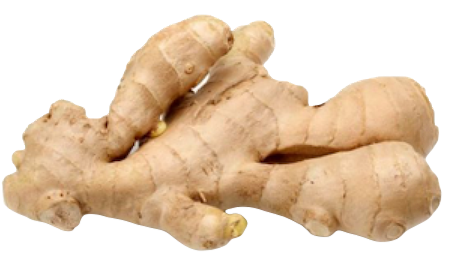Cheap Eats:
Malaysian Ginger and Soy Sauce Chicken
When one speaks of countries with extensive international trading traditions that influenced eating habits and language over large areas, Malaysia may not be among the first places to come to mind, but it definitely belongs on the list. It may be that it is underappreciated in the role of international merchant because it didn’t colonize any of the areas with which it traded. (In fact, the opposite happened; Malaysia’s biggest trading partners, India and China, colonized Malaysia, and even today, there are large Chinese and Indian populations in Malaysia.) More likely it’s because we in the West don’t study much Asian history. But Malaysia’s trading traditions spread ideas, food, and Malay words across a tremendous region.
Trade was flourishing by the 7th century. Malay became the language of trade for several centuries. Malay was easy to learn, so it was used across the Malay Archipelago. By the 1400s, it was even spoken by the Indian, Chinese, and Arab merchants involved in the spice trade. And today, in a country with a varied population, Malay is the language that ties the diverse cultures together.
Much of the food we associate with Southeast Asia and Indonesia is rooted in Malay culture, which absorbed influences from both India and China. Because of this, many of the food words we find in the cuisines of surrounding countries (and carried into English as we enjoy those cuisines) came from Malay: agar-agar, copra, durian, ketchup, mangosteen, paddy (as in rice paddy), sago, and satay (or saté). If you’ve eaten in an Indonesian restaurant, pretty much the whole menu is Malay (bahmi, ayam, nasi, and so on). And if you live in South Africa, you’ve probably eaten bobotie, which is also Malay in origin.

There are a lot of non-food words that have come into English from Malay, as well, including amok, bamboo, camphor, cassowary, cockatoo, compound (the second meaning—an enclosed group of buildings), cooties (from the Malay word for lice), gecko, gingham, gong, gutta-percha, junk (the boat), kapok, mandarin, orangutan, pandanus, ramie, rattan, and sarong.
So next time you’re lounging in a rattan chair, wearing a ramie shirt and eating a bit of satay (but hopefully not with ketchup), remember that it was the great trading empire of the Malay that brought it all to you.
In the recipe below, the ginger of India combines with the soy sauce of China in a dish that is classic Malay fusion. It’s an elegant and fabulously flavorful dish that’s actually quite easy. Enjoy.
Malaysian Ginger and Soy Sauce Chicken
2-inch piece of fresh ginger
1 large onion (see Note below)
4 cloves garlic, peeled
1 approx. 5-lbs. roasting chicken
6 Tbs. vegetable oil
4 Tbs. soy sauce
4 Tbs. rice vinegar
3½ Tbs. brown sugar
Peel and roughly chop the ginger and onion. Place ginger, onion, and garlic cloves in a blender or food processor and blend into a paste. (If ingredients are a bit dry or your blender is a bit feeble, you can add a teaspoon or two of water to keep things moving.)
Remove the neck and giblets from the chicken, and put them somewhere safe (the freezer is good) for future use. Place the chicken in a roasting pan. Divide the ginger paste in half. Rub the chicken, inside and out, with one half of the paste. Cover the chicken and let it rest/marinate for 45 minutes to an hour.
Preheat oven to 350°F.
To the remaining ginger paste, add the oil, soy sauce, rice vinegar, sugar, and ½ cup of water. Tilt the chicken so that the opening is uppermost (pull up tail, and plump and press the chicken so that this opening stays slightly elevated even when you’re not holding it), and pour in as much of the soy sauce mixture as you can. Fold flaps of skin around the opening. (If you don’t have enough tilt to keep most of the liquid inside, you might want to use a skewer to close the flaps around the opening a bit.)
Roast the chicken for 30 minutes, basting it a couple of times with the remaining soy mixture. Then, pour the rest of the soy mixture around the chicken and roast for an additional 60 minutes (or slightly longer, if bird is larger than 5 pounds), basting occasionally, until chicken is done (juices will run clear). In the unlikely event that the pan juices begin to dry out while the chicken roasts, add a little more water to the pan.
When done, remove chicken from oven and allow it to rest for about 10 minutes before carving or cutting into serving pieces. Serve chicken with the sauce/juices from the pan and the onion and ginger from the bird’s cavity.
Serves 4-6.
Note:
A large onion is not the giant onion you find turned into those fried “flowers” at some restaurants. It’s just large—closer to a baseball than a softball.

